Proven ways to keep cabbage fresh for the winter
In winter frosts, it is nice to have fresh vegetables on the table. All year round, imported and greenhouse products are available in stores, but they do not differ in excellent taste and great benefits. Therefore, many gardeners try to keep their own crops as long as possible. This also applies to cabbage. How to keep fresh cabbage for the winter, we will tell you below.
The content of the article
Is it possible to keep fresh cabbage until spring
It is quite possible to get a head of fresh cabbage from the bins and quickly chop a salad from it or put it on borscht even in March. Under optimal conditions, certain varieties of vegetables are stored practically intact for up to eight months.
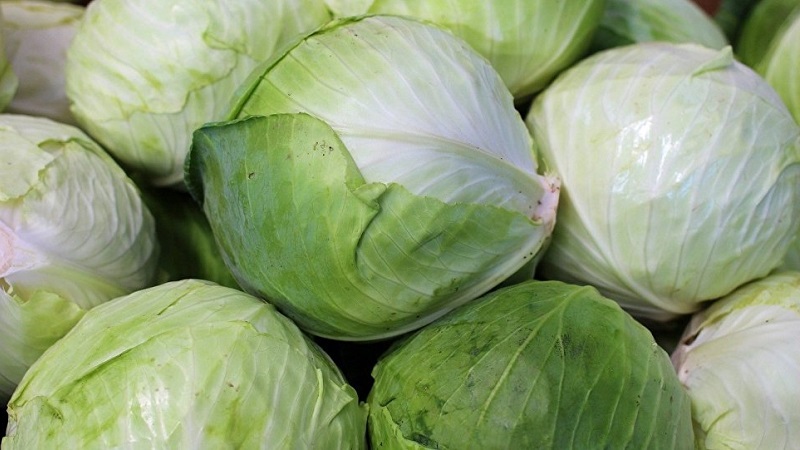
Suitable varieties
White cabbage lasts longer than its exotic relatives – brussels, broccoli, peking, savoy and colored... Nevertheless, the keeping quality of the varieties is different.
Early maturing varieties are not suitable for winter stocks, in a number of regions ripening by June. Loose heads of cabbage made from thin leaves do not tolerate storage well and quickly begin to rot, so such cabbage is served on the table in the days following the harvest.
Late storage champions are considered to be varieties and hybrids... However, many of them are distinguished by tough leaves with hard veins, so they are not consumed fresh, but used mainly for pickling and pickling.
They will stay almost unchanged until next spring:
 Amager 611 (pictured);
Amager 611 (pictured);- Aros F1;
- Snow White;
- Geneva F1;
- Wintering 1474;
- Creumont;
- Turkiz;
- Kharkov winter;
- Miracle F1.
Late cabbage tends to improve palatability during maturation due to the accumulation of sugars.
To pamper yourself with vitamin salads in winter, pay attention to mid-late varieties, especially hybrids:
 Atria;
Atria;- Countess F1;
- Dobrovolskaya;
- Winter Gribovskaya;
- The merchant's wife (photo on the right);
- Menza F1;
- Present;
- Symphony F1;
- Filibuster F1.
Selection of heads for long-term storage
If you buy cabbage at the market or in the store, and its variety is not known, be guided by the following signs:
- Late and mid-late varieties appear on the shelves in late September - October. Everything that is sold before is either early cabbage, or imported products, or the remnants of last year's harvest.
- Heads of cabbage of late-ripening varieties are large and tight, leaves are strong, tightly adjacent to each other. The upper ones may have a light green tint, but the lower ones are necessarily white.
- The taste of late cabbage immediately after picking is bitter, but softens after several months of storage.
If possible, choose heads of cabbage with a stump not chopped off under the very base... Such copies are stored longer.
When and how to properly harvest cabbage for long-term storage
Harvesting time is highly dependent on the variety, so you need to carefully read the seed label. Late cabbage is harvested closer to October, when the daytime temperature drops to + 2 ... + 8 ° С and the first night frosts are noted.
You should not rush to cut the heads of cabbage, as cell juice should accumulate in the leaves. With its lack, the cabbage begins to wilt and crack.However, it is not necessary to delay the collection, otherwise heavy rainfall and frost below -3 ... -5 ° C will provoke putrefactive processes.
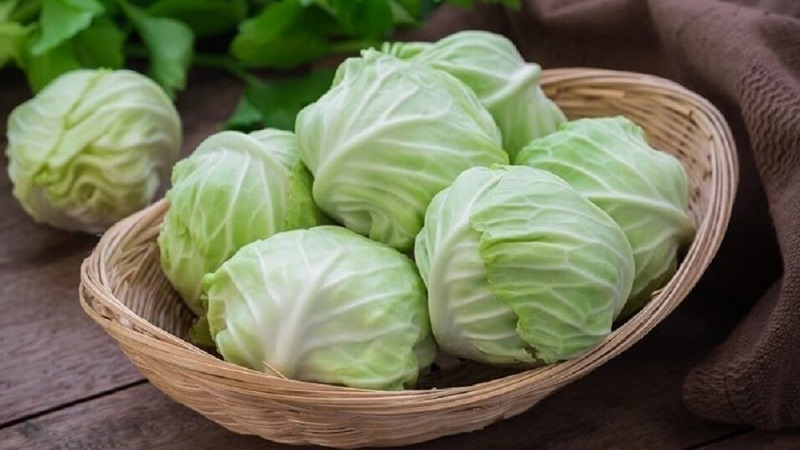
It is advisable to harvest in dry, clear weather, and if it rains, dry the heads of cabbage under a canopy... The stumps are left sticking out 2-5 cm, and the covering leaves are intact. This will protect the cabbage wintering in the cellar from pathogens and mechanical damage.
Reference. To store the heads of cabbage in a suspended state, the stumps are uprooted from the ground using a shovel.
Then forks are sorted, selecting only dense, ripe for storage... Immature, cracked, diseased or frozen specimens are discarded.
Some tricks will help increase the keeping quality of the crop.:
- in order for the outer leaves to become more elastic and less brittle, they need to be allowed to wither a little;
- crushed chalk helps to protect cabbage from rot - they "pollinate" the heads of cabbage before storing them;
- it is better not to put in one place forks of different varieties, especially those that differ greatly in the duration of the growing season.
It can be useful:
Where to store
There are many options for storing cabbage: basements, cellars, sheds, balconies, loggias and even earthen pits at their summer cottage. However, it is better to choose rooms with forced ventilation, controlled temperature and humidity. It is also important to be able to periodically check the heads and remove the spoiled ones.
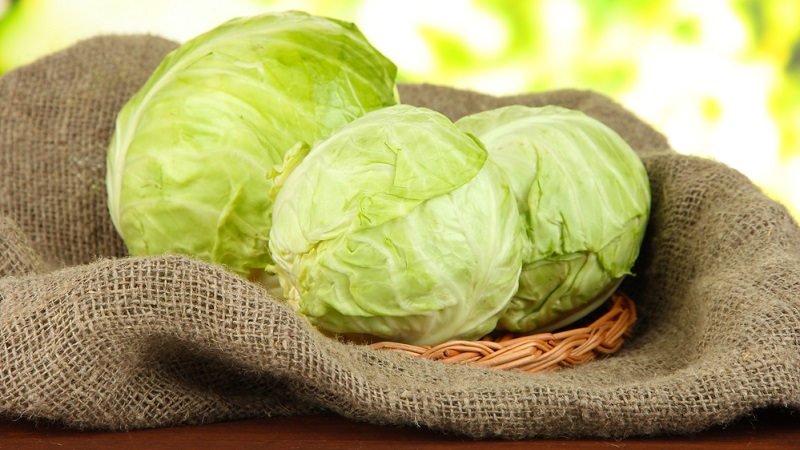
At home
If the size of the living space allows, you can keep the cabbage straight in the apartment. An ideal place would be a pantry in the hallway. or even in the stairwell - away from the central heating radiators. But do not count on the long shelf life of the heads of cabbage, since these storages are still too warm and not humid enough.
In the best case, the cabbage will last for 1-2 months.
In the cellar (basement)
Optimum storage conditions for white cabbage - temperature 0 ... + 2 ° C and humidity 80-90%... These conditions can be easily created in the cellar, therefore, its presence gives every chance to preserve the harvest until spring.
The main factor for successful storage is cleanliness.... Therefore, the walls, floor and ceiling of the basement should be disinfected - treated with lime or a commercial antiseptic. This will protect the surfaces from mold and mildew.
Attention! Eliminate insects and rodents in the cellar. Close the access routes: seal the cracks, close the ventilation hole with a fine metal grate. You can use ultrasonic scarers, mechanical traps, and it is better to refuse the use of toxic substances.
Store cabbage in the form of a pyramidal stack on dry wooden flooring or laid out on shelves... In both cases, it is necessary to ensure constant air circulation:
- the flooring is installed at a height of 12-15 cm from the floor;
- leave at least 20 cm between the shelves;
- recommended stack sizes are no more than 1 m in width and 60-70 cm in height.
In a refrigerator
Cabbage can be stored in the vegetable compartment or in the so-called “freshness zone” in the refrigerator for up to 30-45 days.
To do this, it must be properly prepared.:
- wrap the heads of cabbage with paper or cling film;
- treat the forks and shelves of the refrigerator with preparations of the "Antignil" type;
- cut the stump as much as possible.

From time to time, the wrapping film or paper is inspected for condensation... If moisture appears, the cabbage is repackaged.
Reference. The close proximity to other products, light and constant opening of the chamber prevents the long-term storage of cabbage in the refrigerator, which disrupts the temperature regime.
On the balcony
Storing cabbage on the balcony and loggia has some disadvantages:
- too dry and warm air on insulated balconies;
- the probability of frost - on non-insulated.
To create more favorable conditions, you will have to either constantly ventilate the room, or insulate supplies.
Reference. A possible solution is the use of a special oven or its budgetary alternatives - wooden boxes inserted into each other with a heat-insulating layer between them or a broken refrigerator. In such storage facilities, it is easier to maintain a constant temperature at + 2 ° C.
In the earthen pits
Storing the cabbage crop using this method is acceptable only if there are no other options.... Its main drawback is the high probability of freezing, dampness and rotting of heads. But it is worth trying if there is a sorely lack of space in the apartment, but there is a summer cottage empty in winter.
To organize the pit:
- Dig a hole approximately 60 × 60 × 60 cm.
- The bottom of the pit is lined with straw, cabbage is laid on it in two layers, with the heads of cabbage stumped up.
- The vegetables are again covered with straw and covered with a wooden shield.
- Top covered with earth 20 cm and leveled with a rake.
Unfortunately, it will not work to check the condition of the vegetables without digging a hole and letting in cold air.
Optimal storage conditions
To ensure the freshness of the cabbage for several months, the following conditions are necessary:
- temperature not lower than –1 ° С and not higher than + 5 ° С;
- high air humidity - 80-95%;
- limiting light access;
- good air permeability (in the absence of constant ventilation, it is recommended to ventilate the room at least once a month);
- compliance with sanitary and hygienic standards - protection of stocks from mold, fungus, small rodents.

The recommended temperature and humidity for storing cabbage are inversely related: the lower the temperature, the higher the humidity and vice versa. Therefore, in the main chamber of the refrigerator, where the heat is kept at about 4 ° C, 80% humidity is sufficient.
Fresh Cabbage Storage Methods
Proper organization will help extend the shelf life of cabbage.: so that there is an air gap between the heads of cabbage, and they do not press on each other with their own weight.
In film
Polyethylene a film wrapped around the head of cabbage in three layers maintains the necessary level of moisture inside the fork so that its leaves do not dry out and remain crispy... This method is often used when storing cabbage in the refrigerator or on the balcony.
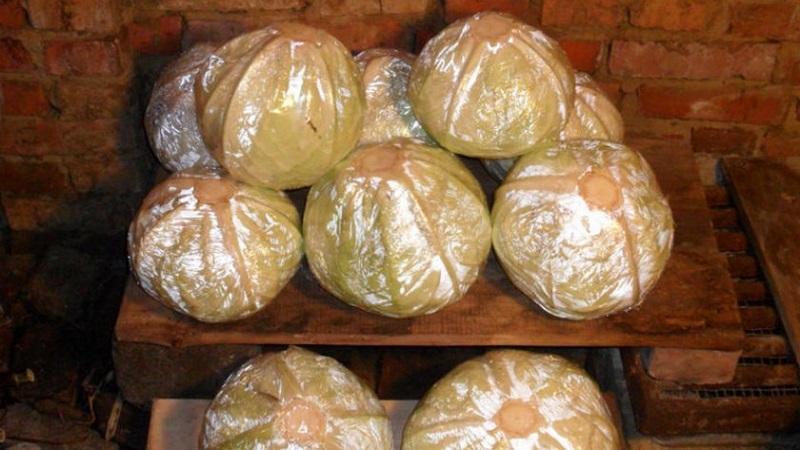
Reference. Vegetables are packed in foil and for hygienic purposes - it protects against external influences, harmful microorganisms and insects. To get rid of insect pests for sure, it is recommended to pre-soak the cabbage in salted water, dry it or blot it with a cotton towel, and only then pack it.
In paper
Paper provides additional thermal insulationfully wrapped forks do not touch each other. Cabbage packed in this way can be stored in boxes and bags.
Reference. For wrapping, it is best to use thin parchment paper. Colored and newspaper contains lead.
In the box
Due to the slots between the slats, the drawer is ventilated, therefore it is well suited for storing vegetables... The material of manufacture and the size of the container are not of particular importance.
The boxes are not stacked too tightly to each other. To provide air access, 10 cm are left between them on each side.
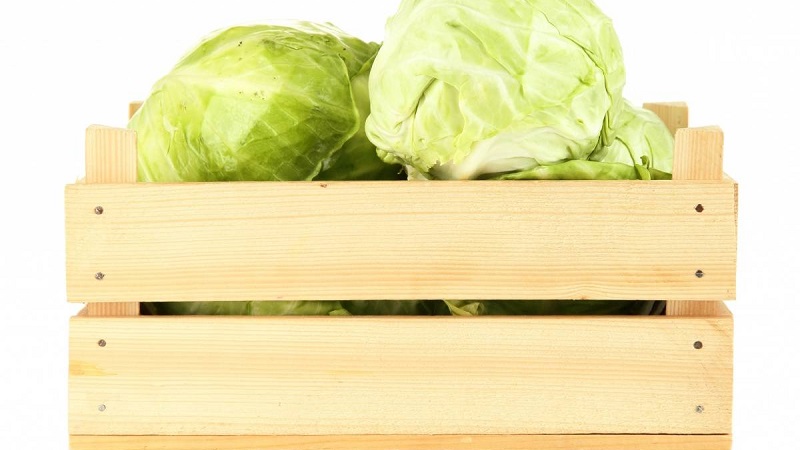
In the grid
The coarse mesh gives a good visual overview of the stored cabbage - so it is easier to inspect stocks for damage, without taking each head of cabbage out of the bag. Another plus is the ease of transportation, since the packaging weighs practically nothing.
It is better to stack bags and nets on wooden pallets or racks, rather than on a cold earthen floor.
In sand
Sand between cabbage forks serves as a natural adsorbent and heat insulator, therefore, keeps stocks as long as possible.
Several options are described for storing cabbage in the sand. The first allows you to arrange stocks more compactly.:
- A generous layer of well-dried clean sand is poured onto the bottom of the wooden box.
- The heads of cabbage are spread on top, stumps up.
- Sand is again poured over the cabbage and the layers are repeated in this way until the box is full.
The second option can lead to rooting and sprouting of the vegetable:
- The bottom of the box is filled with sand by 20 cm.
- The forks are laid in one layer, sticking the stumps into the sand.
To exclude the appearance of pathogenic microflora, it is better to pre-calcine the sand... So it will also get rid of excess moisture.
In clay
To preserve freshness and pleasant crunch, cabbage can be wrapped in a "clay fur coat"... To do this, clay is mixed with water in a 2: 1 ratio to obtain the consistency of thick sour cream. Then they coat each head of cabbage and put it at a distance from each other so that the layer is completely dry. When the clay hardens, the cabbage is put on a shelf or in boxes.
Aweigh
To hang the cabbage from the ceiling, keep the stumps as long as possible.... One end of a strong non-slip thread (twine, twine) is tied around a stump, the other is fixed on any holders under the ceiling: beams, hooks, stretched ropes, etc.
The heads of cabbage suspended in this way do not cake, as they are well blown... They are always in sight, they can be examined from all sides. As a result, the cabbage stays fresh until summer.
Shelf life
The shelf life of cabbage depends on many factors.:
- Keeping quality of varieties. Varieties with excellent keeping quality are edible for seven months, with good - six months, with satisfactory - four.
- Temperature conditions. At room temperature (+ 20 ... + 22 ° C) the vegetable is stored for up to three months, at a temperature of 0 ... + 2 ° C - up to seven months.
- Availability of packaging. Heads of cabbage wrapped in film or paper, sprinkled with sand or coated with clay are more protected from the external environment.
- Ventilation of premises. Lack of air and musty air will shorten the shelf life of any food, including cabbage.
- Sanitary conditions and diseases. Microorganisms and rodents contribute to the development of diseases (mold, mucous and vascular bacteriosis, gray and white rot, phomosis, punctate necrosis).
Conclusion
How to properly store cabbage so that it stays fresh until spring? It is possible, but difficult. It is necessary to organize the right conditions that are not always available to a city dweller: a cool and humid room without access to sunlight, but with good ventilation.
Stocks stored in the refrigerator or on the balcony have a short shelf life, so in the absence of a cellar, the best solution would be to ferment the cabbage.